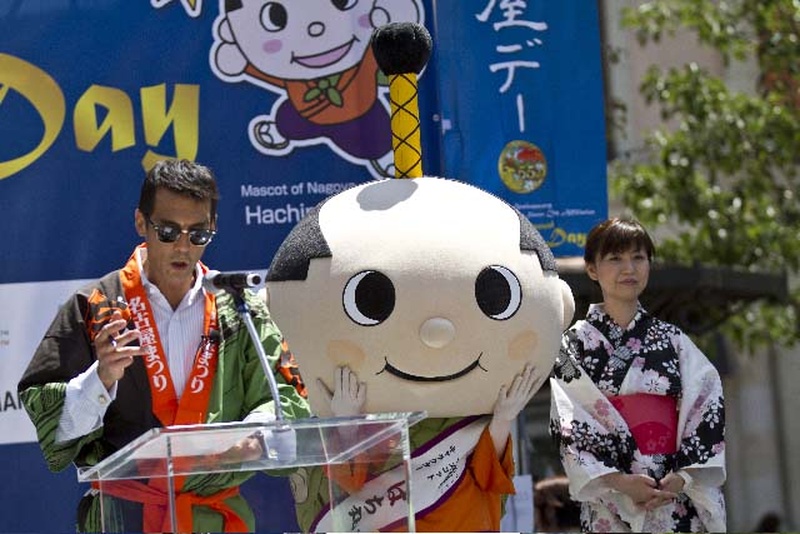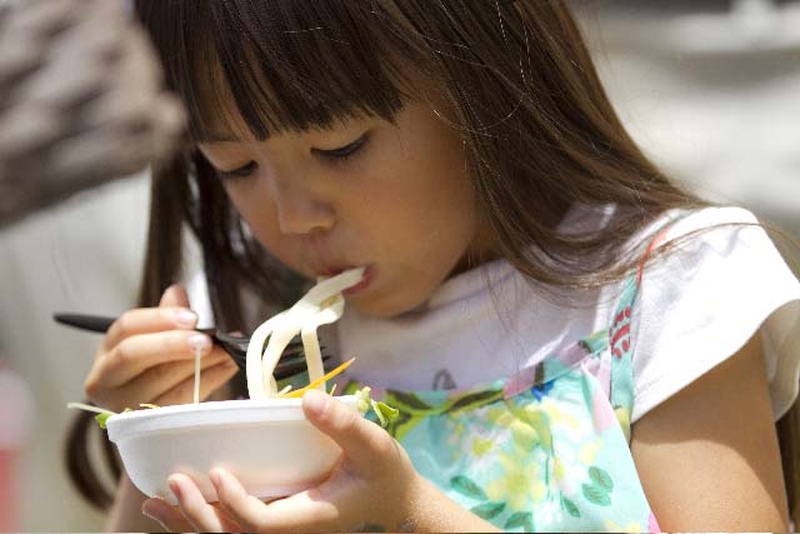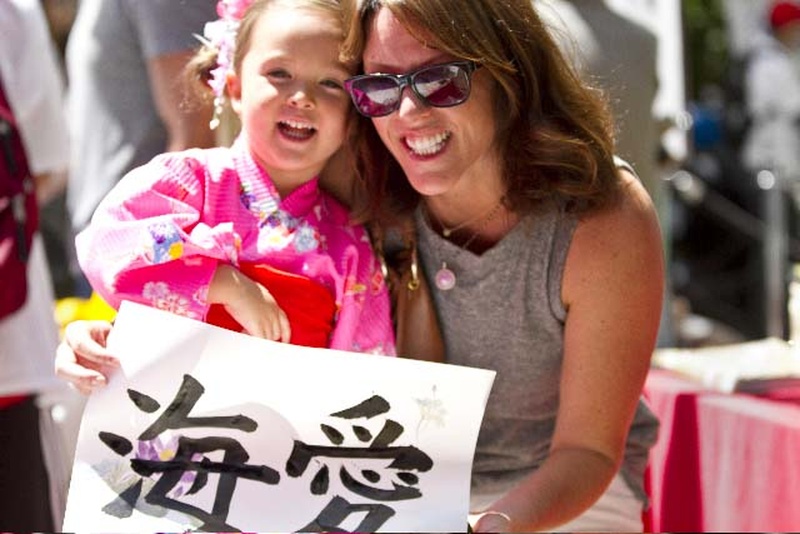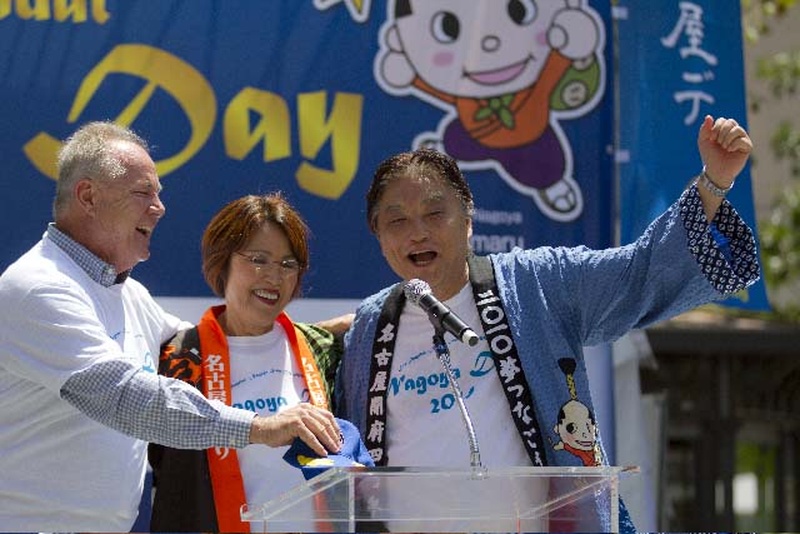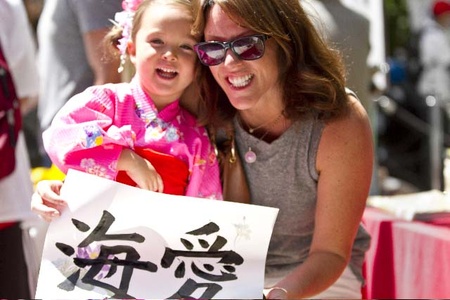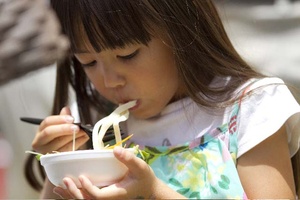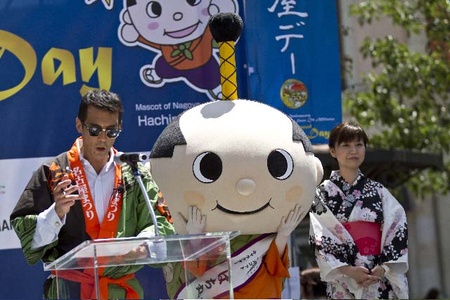Los Angeles' first sister city
There may be quite a few Japanese people living in the US who know that Los Angeles and Nagoya are sister cities. However, it is doubtful whether Angelinos (people of Los Angeles) are aware of the sister city relationship. In other words, Los Angeles is famous from Nagoya or Japan, but Angelinos know very little about Nagoya. It is a sad, unrequited love for Nagoya. Moreover, Nagoya is the first sister city of Los Angeles, which was established 55 years ago.
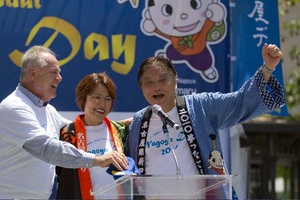
To commemorate the 55th anniversary of the sister city agreement, the Los Angeles Nagoya Sister City Committee (LANSCA) held the "1st Annual Nagoya Day" on August 10th at The Grove, a popular shopping mall in the city. The aim was to "end Nagoya's unrequited love and make Los Angeles' mutual love a reality." As I am close to the committee chair, Teruko Weinberg, I helped out a little, and on the day, I rushed to volunteer with my 16-year-old son. By the way, I am from Kyushu and have no connection to Nagoya. My only memory of Nagoya is visiting on a business trip while working for a publishing company in Tokyo and eating misonikomi udon. Going back, I also went to Meiji Village in Aichi Prefecture, where Nagoya City is located, on a high school field trip.
Well, Nagoya Day turned out to be a huge success. There were people of all races at the venue, from Japanese people wearing yukata to Japanese-Americans, Asians, and anime-loving Americans. From noon until early evening, there were a continuous stream of events on stage, including sushi demonstrations, cosplay contests, taiko drumming, Japanese dance and calligraphy performances, a samurai show, and even a mini live performance by anime song singer Stephanie.
Next to the stage, a new car (Lexus) from Toyota, a global company with its headquarters in Nagoya, was on display, and booths were set up by JR Central and Mizkan, which also represent Aichi Prefecture. Along with the tea ceremony, what also attracted American visitors was the service of having their name written in kanji on a piece of writing paper. People were seen walking around happily with writing paper with names like "Justin" written on it.
The preciousness of longing for one's hometown
Long queues were made for samples of Nagoya food. Nagoya is known for its flourishing unique food culture. Sample sizes of representative Nagoya food such as tempura musubi, kishimen noodles, chicken wings, misokatsu, and hitsumabushi were offered free of charge. The chicken wings and hitsumabushi were particularly delicious. The chicken wings were exhibited by the owner of the American branch of Furaibo, a famous restaurant with its main store in Nagoya, who presented the "Furaibou signature dish." As you know, hitsumabushi is eel seasoned with sweet and spicy seasoning served on rice, but what made it special on this day was that it was served on vinegared rice. It was a big hit as it could be eaten refreshingly in an outdoor space under the blazing sun.
Hachimaru-kun, the official mascot of Nagoya City, is very popular among the children. I felt like saying to him, "You must have worked so hard in this heat."
And let's not forget the important thing. At the opening, Mayor Takashi Kawamura of Nagoya and Los Angeles City Councilman LaBonge surrounded Chairman Weinberg and promoted the sister city relationship between Los Angeles and Nagoya. The event was hosted by Channel 7's Japanese-American anchor David Ono.
At the end, a committee member wearing a "Nagoya Day" T-shirt called out to the visitors, "Thank you for coming today. Please come to Nagoya." Yes, one of the goals of Nagoya Day is to attract tourists. First, we want people to enjoy the Nagoya Day event and get to know Nagoya. Then, those who want to know more might get off the Shinkansen at Nagoya, located between Tokyo and Kyoto.
When I personally asked people to come to Nagoya Day, many Japanese and Japanese-Americans raised two questions: first, "Why hold it at the same time as Nisei Week, and on the day of the parade in particular?" and second, "Why The Grove and not Little Tokyo?"
Regarding the first question, it wasn't intentionally scheduled to coincide with the Nisei Week parade. We were initially planning to hold it on the Saturday before, but then another event was scheduled to be held at The Grove, so we had to postpone it to Sunday.
So why did they choose The Grove as the venue? This is because of the purpose of the event mentioned at the beginning, "to end unrequited love for Nagoya." First of all, it had to be a place where a large number of ordinary Americans could gather. This was the first year for Nagoya Day, which means that its existence was completely unknown. For this reason, they targeted a popular shopping mall, which doesn't need to attract customers. If people who come to shop, dine, or see a movie on the weekend get lost and wonder, "Huh? What are they doing? It looks interesting," then their first goal will have been achieved.
Come to think of it, the Okinawa Festival in Hawaii is well-known, but I don't recall events like Tokyo Day or Osaka Day ever being held in the Los Angeles area. In that sense, I think the success of the first Nagoya Day is significant. As it's called "annual," they intend to continue it every year from next year onwards. However, Weinberg made it clear that they would never hold it on the same day as the Nisei Week parade. One of the reasons for this is that, as she participated in the parade, she was unable to see Nagoya Day through to the end of the day.
Personally, I would like to take part in this festival again next year, as this event really made me realize just how precious a feeling of pride people have in their hometowns.
(Photo courtesy of Nagoya City)
© 2014 Keiko Fukuda


